

Sadly, the tree that attracted Blue Jays, crows, 3 species of woodpecker, starlings and a Peregrine Falcon would soon be gone. In less than a week, a tree that took a number of years to grow was gone.
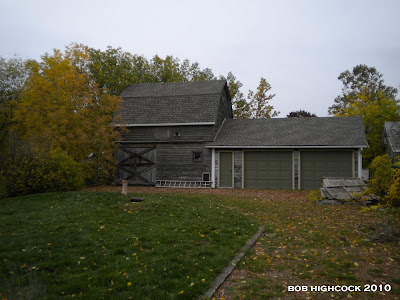
Birding, hiking & nature, with a dash of cycling, in southern Ontario.





A beautiful Fall morning in Niagara-on-the-Lake.
It was a Peregrine Falcon.

We observed the bird for a couple of minutes and followed it as it left its perch and flew north towards a residence with bird feeders. The falcon missed a Mourning Dove but quickly grabbed another bird without any hesitation. What happened next was interesting. The Peregrine Falcon did not carry its prey to the nearest utility pole. It turned around and headed south. I followed it using the scope until it reached the Garden City Skyway and landed at the base of a light standard.

The falcon had carried its heavy prey approximately 2 kilometres. The benefit of taking its kill to the skyway? On a utility pole the falcon would be in the open. The structure of the skyway offers some protection from a much larger Red-Tailed Hawk with thoughts of stealing the falcon's meal.
We moved on to the Lake Ontario shore before Jean and I set off to cover our area. At Jones Beach we found the usual waterfowl, Mallards, Canada Geese with a few Mute Swan and a couple of unidentified teal species.
Slightly west of the public beach is the Port Weller East Pier. While Kayo and Brian drove to the tip, the rest of us walked along the seaway road. Not a great variety of migrants. Kinglets, White-throated Sparrows and Yellow-rumped Warblers flitted in the brush on both sides of the road. John pointed out a couple of Rusty Blackbirds as they flew overhead and Jean, Paula and I viewed a Sharpie quickly fly by, land in a distant tree and take off as soon as I got the scope on it.
The most interesting sight while walking along the east pier was a young American Kestrel dining on an unknown passerine.


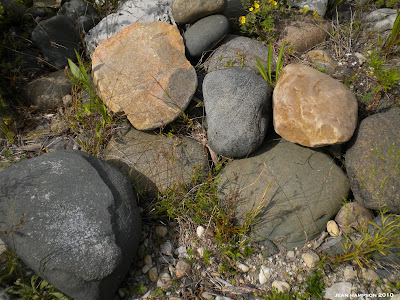


No Swamp Sparrow north of the bridge this year. Only Song and Chipping Sparrows made appearances this fine morning.
While hiking the dunes of Inverhuron P.P. we observed many Black-capped Chickadees flying across our path. Mixed in the conifers with the chickadees were a few Yellow-rumped Warblers.
Heading towards the park's beach, we found some Black-throated Green Warblers (3) east of the bridge.
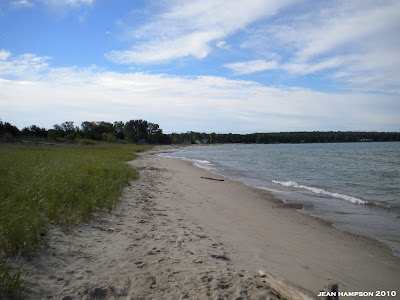
After birding Inverhuron, it was time to take it easy at the public beach.
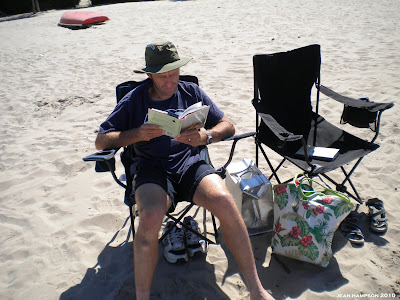
A relaxing twitcher reading The Reluctant Twitcher.
August 19
Our vacation in Bruce County would soon be over. A pleasant sunset was enjoyed in Kincardine the previous evening but any chance of birding Thursday morning was washed out by a heavy rainfall.

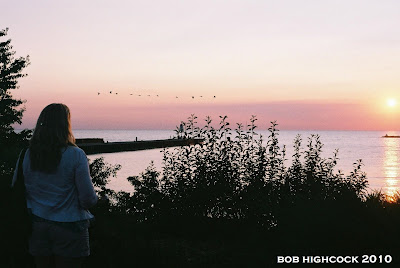

We left Inverhuron and Tiverton early in the afternoon and headed south on Highway 21.

The morning rain had flooded a small section of a field east of the highway. If I had not stopped in a construction lot to obtain an item from the back of the car we would have missed the shorebirds and an addition to the year list. A Solitary Sandpiper (#180) was wading in the pond with a few Greater Yellowlegs, a couple Semipalmated Sandpipers and a Least Sandpiper. A Wilson's Snipe was well hidden in the grass but Jean's keen eyes spotted it as if it was out in plain sight.
We reached the town of Mitchell late in the afternoon and stopped at the same picnic area we did the previous year. In addition to the Scissor-tailed Flycatcher found at the Luther Marsh, daily sightings of some exciting birds were occurring at the Mitchell Sewage Lagoons while Jean and I were at the cottage. Though it is a toy I can do without, a Blackberry would have been extremely advantageous in this situation. On the 16th, a birding friend of ours posted that he had seen a Hudsonian Godwit. The next day, another post indicated that along with the Hudsonian, a Marbled Godwit was also present. In all, a total of 14 shorebirds were hanging out at the Mitchell Sewage Lagoons while I was viewing Tree and Barn Swallows flying over Whirl Creek. Arrrgh! Not only would we be past 200 species for 2010 (as of today), the life list would have 2 more birds on it. Next year, a stop at the Mitchell Sewage Lagoons in Perth will be on the itinerary and hopefully the life list will have a couple of godwits.


I was hoping to find a Lesser Black-backed Gull but all we saw were Ring-billed and Herring Gulls.


Closed Gentian, Gentiana clausa
When the group stopped for a short break, there were some thrushes moving in the trees and brush near the campground comfort station that caught the attention of Mike. He identified one as a Gray-cheeked Thrush. This would be a lifer if Jean and I could get good looks at the distinctive features of the bird. We did not get a satisfactory view of the bird's field markings. It remained quite hidden and the presence of a Swainson's Thrush added to the difficulty of a successful lifer observation. In the open, distinguishing the differences between a Swainson's and Gray-cheeked Thrush would be fairly easy. We have gained a considerable amount of experience over the years but the partial views were not to my liking. For a lifer, I wanted to see all of field marks. The Gray-cheeked Thrush tick would have to wait. It was sooner than I thought it would be but not without frustration. I think we've all been there.
We had walked as far as we could in the provincial park and were retracing our steps when we came across our second attempt at a lifer Gray-cheeked Thrush. Mike picked it out as we walked through a stand of pine trees. Again, a quick view for me and I observed the bird did not have an eye ring and it was gray-brown above. This species is easily disturbed and as more of the group arrived the thrush vacated its perch. Mike asked if I got it. Yes, but unfortunately Jean did not see it. No tick. It was found again by a member of the group and though the description of its location was well described, no one could see it. Despite repeating the details of the bird's location, the group (now tightly packed together on a gravel road) still did not see it. The birder that found the thrush scored a view from another vantage point. The majority of the group hurriedly advanced to his location and he warned them to approach quietly. Luckily for some, it remained in the tree to feed on wild grapes. Jean and I stayed at the original spot with a few birders that successfully spotted the thrush. I still cannot believe we could not see this bird. Were Jean and I the only ones that could not see it? Frustrating as hell. The group left the area but Jean and I remained for one last futile attempt. Still no tick.
Warblers were more apparent during the hike. In total, Jean and I observed 13 species during the 5 hour hike. None were added to the year list on this trip but we had great views of a beautiful Philadelphia Vireo (#195) in the tall trees on Lighthouse Crescent. The yellow on this vireo was brilliant.
Walking through the Old Cut, Jean and I finally got our Gray-cheeked Thrush lifer tick. As we approached some netting on the trail, our nemesis of the day flew into the net. Mike quickly grabbed it and allowed for some quick views before taking it to the banding station.

A Swainson's Thrush was soon caught in the net.



Jean and I had a successful weekend in Norfolk County. Of the 91 species we observed, 2 were lifers and 9 were added to the year list. One more tick and we will tie our personal best. What was the best find during the field trips?
Was it the cupcakes? They did have a peanut butter cup baked in the center.


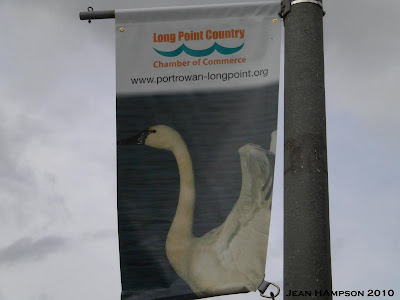


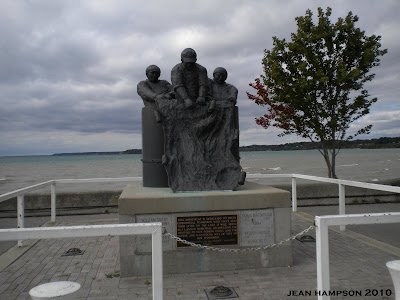

The four cells of the Townsend Sewage Lagoons are located west of the town of Jarvis and were the best stop of the day for Jean and I. The water level in cell #4 was low enough to attract shorebirds and though high winds made it difficult, we had great views of some lovely birds.
Four species were quickly added to the year list. Rusty Blackbirds flew overhead as we looked at Pectoral Sandpipers (2) through our scope. American Pipits, usually only seen by Jean and I when an observer points them out as a flock of them are flying overhead, were landing in the lagoon. Previous observations of Arthus rubescens have been mediocre at best. The last being a distant lone individual at the Blenheim sewage lagoons during last year's OFO convention. These pipits were much closer and the best views occurred when we were looking at our 301st lifer. A Baird's Sandpiper!

Levels in cells 1, 2 and 3 were high and each contained waterfowl. Ducks viewed included, Ruddy Duck, Mallard, Green-winged Teal and Northern Shoveler, another addition for the year list. The lagoons were the last stop for most of the group but a few, including Jean and I, continued on to Turkey Point Provincial Park.
We walked along a park road looking for migrating passerines in the trees. No lifers or first of the years to end the day. Blackpoll (1) and Palm (1) were the only wood warblers seen. The trees at Long Point would be dripping with them on Sunday's field trip and well worth missing this year's Squeezer.